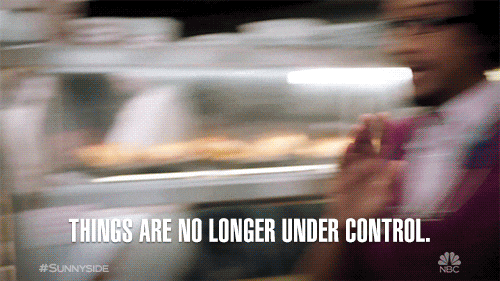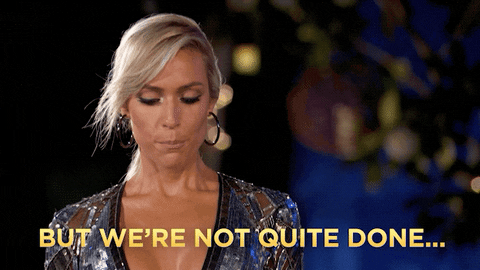- UniScoops
- Posts
- What is Modernity? 📱
What is Modernity? 📱
Plus: Should we read unfinished novels? 📖, and more...
Howdy, this is UniScoops! Our newsletters are more packed with knowledge than a Tesco trolley on payday.
So, without further ado…
Here’s a taste of what we’re serving today:
What is Modernity? 📱
Should we read unfinished novels? 📖
PLUS: Whale talk, Alien life and science, and India and indigeneity.
GEOGRAPHY
What is Modernity? 📱
When you hear the phrase ‘modernity’ what do you imagine? Perhaps you think of Teslas and fast fashion, or maybe the Victorian era with the development of manufacturing industries and transportation. In geography, modernity can be hard to understand: it can be used in general terms (to describe our current state of ‘being modern’), as a way of referring to rapid industrialisation and urbanisation across Western Europe during the 19th century, and as a concept. Here, we’ll delve into what modernity actually is.
💡 Things to consider
Modernity is tied to racialisation: Some geographers argue that race, and racism, was created as a result of modernity. What this means is that whiteness became the ‘ideal’ race, and this was portrayed as common sense and the ‘natural’ way of defining other races. Consequently, race became the dominant framework through which people were differentiated and treated. Ideas about racial superiority were often developed or tested by European colonialists. For example, when parts of Latin America were colonised, distinctions between ‘primitive’, often Indigenous rural people and ‘elite’ Creoles (who have European heritage) emerged. Debates about the ‘urban jungle’ are also infused with the idea that working-class people of colour dominate cities, and turn them into hopeless and dangerous environments. Of course, this is a massive simplification, but it does show how during countries’ periods of urbanisation, growth, and development, race becomes a method of segregating certain populations and portraying some races as more intelligent and enlightened than others.

Charles Baudelaire
Modernity is defined by chaos and paradoxes: Charles Baudelaire’s (1857) poetry collection describes how modernity is the ephemeral experience of life in a big city, defined by the contradiction between beauty and hardship. Baudelaire claimed that, as Paris was changing and becoming modern, its citizens often felt distracted, confused, and overwhelmed. Religious beliefs, morals and values which were accepted by societies were becoming more fluid, and people struggled to cope with the seemingly endless possibilities afforded by increasing mechanisation and opportunities. Although countries went through periods of modernisation at different times and in different ways, you might consider the world of Jekyll and Hyde an example - prostitution, alcoholism, and crime are rife in inner-city London, and life is a constant battle between good and evil.

#chaotic
Modern life is often considered fast-paced, particularly in cities: Nowadays, modernity looks and feels different. By the late 20th century, modernity had become a global phenomenon, and in the 2020s we see multi-national corporations like Apple, TikTok and McDonalds dictating consumption patterns across the world. Lots of scholars argue that modernisation makes life faster - cities get busier with vehicles, people work hard and are rushing from place to place. But that’s not the case for everyone. Think about refugees housed in hotels on industrial estates, or older people living in rural areas which lack reliable buses or taxis. Their experiences of cities are very different to this stereotype. But modernity has changed temporalities - or the ways we use and experience time. We may find it hard to walk slowly along the streets of London, because footfall is high and fast, or we might linger and stare at the massive billboards in Piccadilly Circus. Part of modernity is consumption, and we desire status symbols and wealth. Do you think there are spaces ‘outside modernity’? If so, what?
🔎 Find out more
ENGLISH
Should we read unfinished novels? 📖

…but does that mean we should/shouldn’t read it?
Unfinished books can be a source of frustration for readers who have invested time and energy into a story, only to find that it doesn't have a clear resolution. Given the abundance of completed novels available in global literature, many of you will ask why would you willingly put up with the flaws of an incomplete one? It’s a good question. However, some readers enjoy the mystery and intrigue that can come from an unfinished book, as it allows them to use their imagination to fill in the gaps. Many famous writers, such as Charles Dickens with The Mystery of Edwin Drood and F. Scott Fitzgerald with The Last Tycoon, have unfinished projects that are valuable creative works in their own right and should not be discarded simply because they are not finished.
💡 Things to consider
Embracing the unfinished: A key benefit of unfinished novels is that by reading them, we learn how best to situate ourselves in an unfinished world. These manuscripts serve as a reminder that all stories are works in progress and that creation is a never-ending process from a literary standpoint. They can also serve as a testament to the writer's creative vision, as well as their willingness to experiment and take risks with their storytelling.

Different Endings: It is also important to note that certain unfinished books are eventually completed by other authors, either through fan fiction or approved sequels. Most unfinished novels by notable authors, are completed using either plans created by the writers themselves or by analysing their writing style and creating an ending most similar to what is presumed the author would have wanted. This can help to provide closure for readers and offer a glimpse into different interpretations of the original story.
Personal Preference: Ultimately, whether a book is unfinished or not is a matter of personal preference and interpretation, and there is no right or wrong answer. The important thing is that the book is able to connect with you, the reader, in some way, whether that's through its resolution, its lack of resolution, or something else entirely.
🔎 Find out more

🍒 The cherry on top
🐋 Whale talk: This article dives into the fascinating world of beluga communication, where a squishy blob of forehead fat called a "melon" plays a starring role. By contorting their ‘melons’, belugas might be expressing emotions, signalling to each other, or even navigating their environment. Great if you’re into Biology!
👽 Alien life and science: The "flying saucer" craze of the 1950s sparked public interest, but also fueled skepticism towards legitimate scientific research. This Aeon essay explores the surprising impact of UFO sightings on the scientific search for extraterrestrial life (SETI). Great if you’re interested in the History of Science!
🇮🇳 India and indigeneity: Does the UN definition of ‘indigenous’ prioritise pre-colonial continuity and territorial rootedness? This article challenges us to move beyond a fixed definition of indigeneity in India. An interesting read if you like Politics or Anthropology.

👀 Keep your eyes peeled for…
27th May:
28st May:
29th May:
30th May:
31st May:

🗳️ Poll
How was today's email?We'd love to hear your feedback! |
That’s it for this week! We’d like to thank this week’s writers: Eleanor Luxton (Geography) and Poppy Seagrove (English).
💚 Like UniScoops?
Forward this edition to someone who’d love to read it for extra kudos!
📢 Want to tell us something?
Reply to this email to tell us what you think about UniScoops, or to give us any suggestions on what you’d like to see.
🧐 New to UniScoops?
Get your weekly fix of academia with our fun, thought-provoking newsletter. No jargon, no fluff, just the good stuff. Subscribe today.


Reply